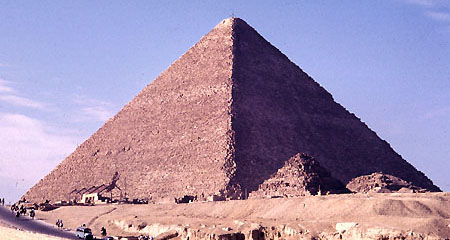![]()
What you must do in this unit
- Familiarize yourself with the textbook and plan when assignments are due.
- Review NOVA Online policies and procedures and the course requirements for this course. Check out all of the course assignments and materials. Pay particular attention to the details of the midterm and final exams. Take appropriate action now if you will need proctored examinations. You may also use ProctorU to take your exams on your home computer. See the information about ProctorU on Canvas.
- For further course and contact information, please read your Instructor's Welcome on Canvas. You can also watch my short video on why it is not that terrible that you have to take a history survey course.
- Make sure that you have read the information on the course assignments and grading. This is very, very important.
- Read the course introduction notes.
- Since the use of proper grammar, spelling and style are an inherent part of each assignment in this course, please check the course writing resources available in Charlie's History Writing Center for more information.
- Study the Questions to Consider and the Key Terms for the unit. These are important for your midterm and final exams. You might want to take a look now at the exam information.
SUBMIT
- Submit the required Introduction paragraph (10 points).
- Take the Syllabus Quiz in Canvas. (10 points extra credit) This is a short, 10-question orientation quiz that you must take and pass with a score of 9/10 before you can continue in the course. If you must, you can retake the quiz more than once.
- Yes, there are other students enrolled in this course with you. Post an informal welcome to everyone in the online introduction discussion forum (5 points). Please first review the instructions for Using Canvas.
- NOTE that you must complete and submit the introduction paragraph to avoid being removed from the course on your First Assignment Due date. See your course schedule for the exact date.
- As an exception to the course one assignment submitted per day, you should do all three of these items on the same day.
What you should do in this unit
- Watch the short video on developing a time management schedule for your course work. Please be realistic about your work, family and course obligations when you sign up for an online history course. If you are working fifty or sixty hours a week and taking a full load of courses, then you are going to have trouble finding enough time to study.
- Watch our short video from 1995 on studying the history of civilizations. (Or you can watch the 1995 introduction to HIS 101.)
- Watch the short video on asking questions in your course.
What you can do in this unit
- Listen to some further introductory remarks as an mp3 file. You can also read the information as a txt file.
- Read some short remarks on Why Do We Teach and Study Western Civilization; or World Civilization, or Why Study Any History?
- Check out Professor Campbell's short video, Is History B.S.? or his Is Western Civilization B.S.?
- We also have a list of history associations available.
- Review the sample analysis of an excerpt from Hammurabi's code of laws. There will be many assignments in this course which will require you to read and analyze a historical document.
- Begin to review for the map portion of the midterm (unit 7) and final (unit 15) exams. Now is a good time to begin to study and prepare. Please check the Blank Western Civilization map and the Map items, a list of the geographical places, features and areas that you will be expected to locate on a blank map for the tests. Check some recommended sources for map study.
- Years ago when the course was offered, we used television programs and then later audio lectures to supplement the reading in the course. Those videos and audio clips were once available on iTunes. That material does not exactly fit with some of the current assignments in the course, but you might find something interesting, useful or valuable there. In particular, check out the short clip on Death and Destruction in the Western World.
Extra Credit Options
- For up to 10 points of extra credit, review this entire course website, check the online NOVA Online student orientation and send your instructor any questions that you might have. This must be done in unit 1 of the course to receive credit.
- For up to 10 points of extra credit, comment in a long paragraph on the perspective of time displayed in Carl Sagan's Cosmic Calendar (also a slightly different versions at The Cosmic Timeline). You can also watch this on YouTube. (well worth watching!) Here is a link to the actual timeline of the universe.
- For up to 10 points of extra credit, comment in a long paragraph on the remarks relevant to the characteristics of "civilization" according to François Pierre Guillaume Guizot.
Unit Learning Objectives
- Upon successful completion of this unit, you will be able to explain the structure of the course and the format and requirements of the main assignments and exams.
